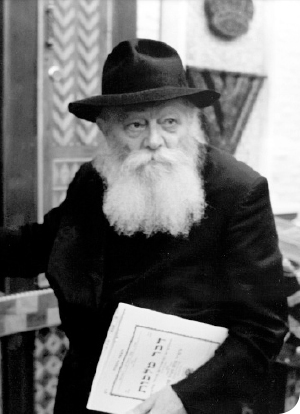From Chapter Seven of Rabbi Shloma Majeski’s Likkutei Mekoros (Underlined text is the compiler’s emphasis.)
Translated by Boruch Merkur
 [Continued from Issue #951]
[Continued from Issue #951]
9. In the spirit of “the living shall take it to heart,” the following is a lesson and directive in the wake of what transpired.
First and foremost, even after his passing, institutions devoted to the shlichus (the emissarial work) of my revered father in-law, the Rebbe, must continue their mission and expand their reach. In fact, they must do so with even greater strength and fortitude, adding and renewing life and vitality – “just as his descendants are alive, so is he alive” (discussed above in Section 5).
This especially applies to members of his household, sh’yichyu, “zar’o – his descendants” in the literal sense – “his descendants are alive.” May they increase in all aspects of life and vitality – both materially and spiritually, a healthy soul in a healthy body – with good health and longevity, until one hundred and twenty years (like the lifespan of Moshe), or even reaching one hundred and eighty years (like the lifespan of Yitzchok).
Everything begins with Torah – “Moshe received the Torah at Sinai and passed it on…and they trained many disciples.” It is, therefore, appropriate to focus on and draw attention to (“the needs of the public are reviewed on Shabbos”) the start of increased support and effort to expand these institutions by publishing (in honor of the Shloshim) a compilation of novel Torah insights (including words of inspiration about Torah and Mitzvos, even in the national language). The publication should be done with the participation of the students of these schools, family members, relatives, friends, and the like. This Torah compilation should list the names of the supporters, being “a Mitzva to publicize those who do a Mitzva.” Crediting them for their assistance will encourage them to further sustain and expand these institutions.
This effort will bring about a further increase in the concept of “just as his descendants are alive, so is he alive,” providing a “mazkeres netzach – a perpetual memorial,” which will further speed up the true perfection of perpetuity (without the need for “a perpetual memorial”) with the eternal life that follows the Resurrection [of the Dead in the Future Era].
The main thing though is that the event of “one who dies on Erev Shabbos” results in a “positive sign” (if there is still a need for “signs”). There has already been the completion and perfection of the mission of refining and purifying mundane matters in a manner of “ze’ev yitraf” [an expression denoting how Shabbos extends into the work week both before and after its official beginning and end] by means of “the descendants of Yosef” (my revered father in-law, the Rebbe, leader of our generation), who are likened to fish. Everything is now ready for the feast, the feast of the Future Era (“a day that is entirely Shabbos and tranquility forevermore”), when there will be (after the preparations of Erev Shabbos are completed) the ultimate experience of eating fish, “the flesh of the Leviasan” [see Footnote 105 in the original], as well as Shor HaBar, and Yayin HaMeshumar.
May it be G-d’s will – and this is the main thing – that there will be no need for “signs” for the end and completion of our deeds and our service, as well as the preparation for the redemption, for this very moment, on this Shabbos, Moshiach Tzidkeinu arrives, “and they shall get up and sing those who dwell in the dust,” and he (who became one who “dwells in the dust” on this Erev Shabbos [see Footnote 65 in the original text]) among them, and my revered father in-law, the Rebbe, leader of the generation (baal ha’hilula of the tenth of Shvat), at their head and at our head, the Jewish people of this generation, living now as souls in bodies, eternal life (without any interruption, G-d forbid). All these people shall proceed together, along with all the shuls and yeshivos and Mitzva centers (including, of course, the institutions mentioned above) of the Diaspora, and go to the Holy land, to Yerushalayim the Holy City, to the Holy Mountain and the Third Beis HaMikdash (the threefold Temple), this very instance.
(From the address of Shabbos Parshas VaEira, 28 Teives, Mevarchim HaChodesh Shvat, 5752; Seifer HaSichos 5752, pg. 278-279)